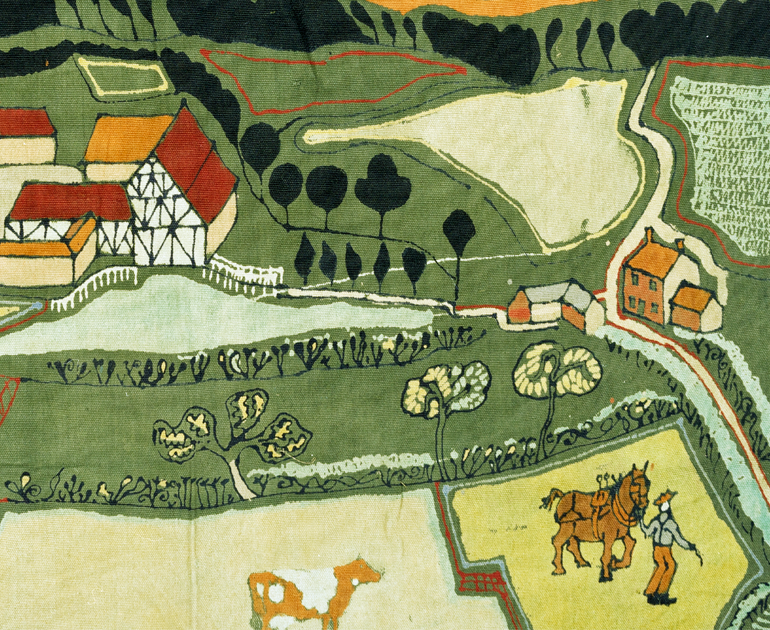From chalk to cheese: the new display in the Our Country Lives gallery
As we get ready to share the Museum with visitors once again, Curator of MERL Collections Ollie Douglas is to hand to reveal a change to our displays. As he explains, this has been in the pipeline since we relaunched the galleries in 2016. We are sorry to say it means our first visitors back […]
51 Voices: Digging Deeper
This January, The MERL embarked on 51 Voices, a new year-long project celebrating the Museum’s seventieth anniversary in 2021. Throughout the year, we will be working with a range of writers, artists and different communities to give contemporary voice to fifty-one objects and archives in The MERL collection connected in myriad ways to our founding year. In this […]
The Country Year
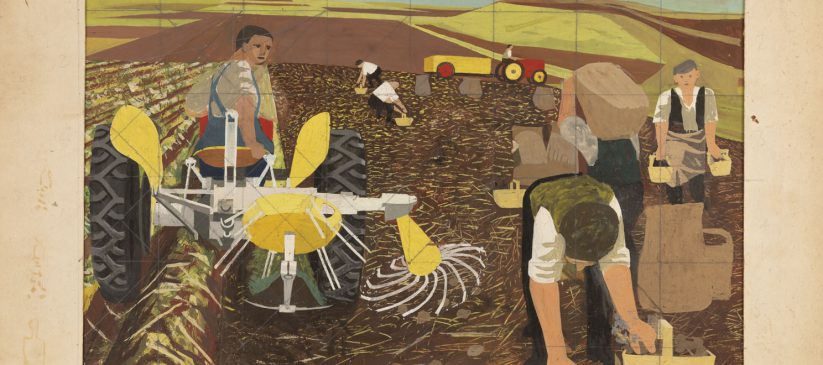
Barry Evans and William Kempster, Designs for The Country Year, 1951 The MERL holds five of these preparatory artworks, originally part of a wider set. The series was reproduced at a larger scale in a ‘merry-go-round’ structure called The Country Year. This sat between exhibits focused on Country Life and Rural Crafts in the Country Pavilion of the […]
The Hermitage
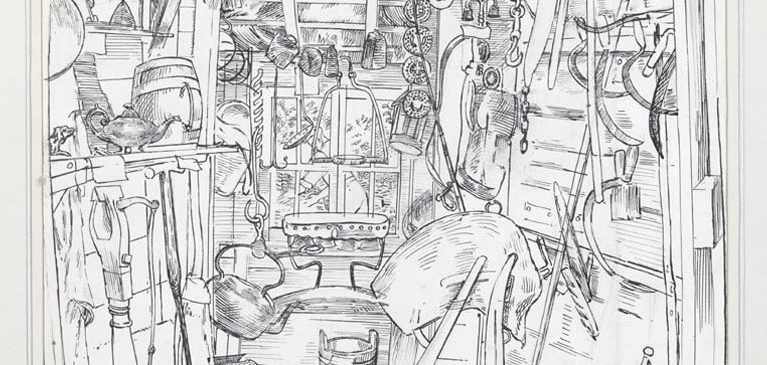
Thomas Hennell, Drawing of the Hermitage, 1939 This drawing shows the interior of a hut that the interwar writer H. J. Massingham had built in the orchard of his home ‘Reddings’, in Long Crendon, Buckinghamshire. The object collection seen stored in this hut was donated by him to The MERL in 1951. The hut was […]
Splint Basket
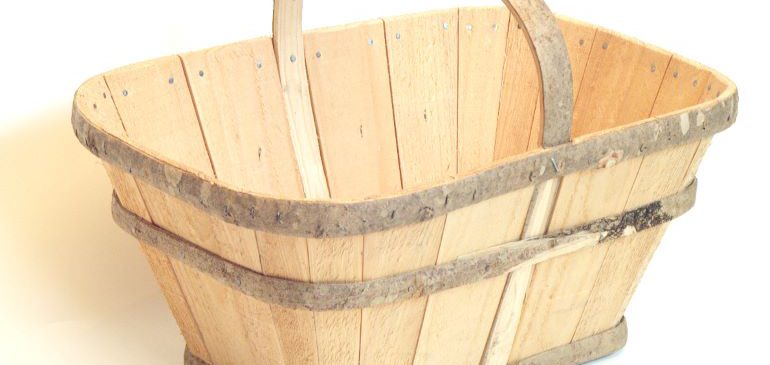
These splint baskets were highly popular in North Devon before World War 2. They were used for a wide variety of purposes, such as feeding cattle, and carrying apples and potatoes. This specific basket would not have used in the field. Instead, it was made and sold by Jack Rowsell, who made around 25 – […]
Canal hand bowl
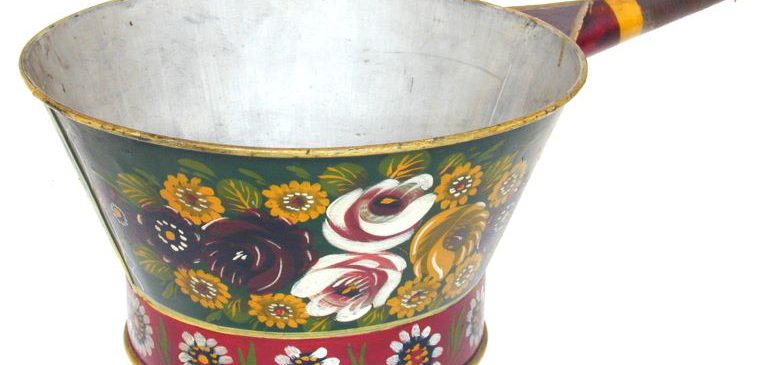
This hand bowl, known also as a dipper, was painted by L. B. Faulkner of Canal Wharf Works at Linslade, at the workshop of the canal carrier. These sorts of painted utensils for use on canals were known as ‘bargee ware’. The bowl would have been used on a narrow boat to take water from […]
Lion and Unicorn
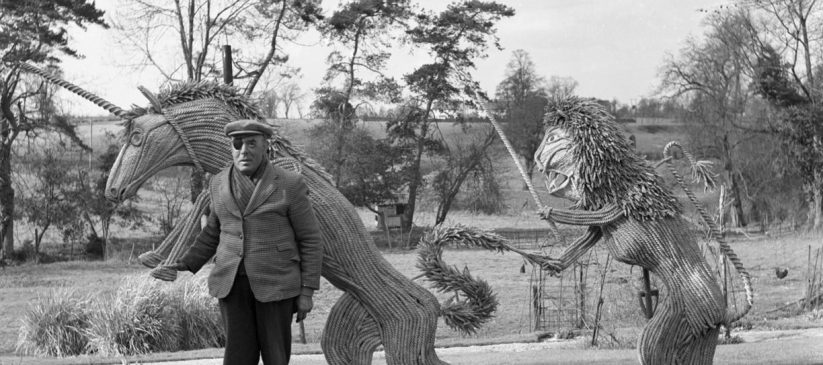
John Tarlton, Fred Mizen with Lion and Unicorn sculptures, 1951 These photographs by John Tarlton show celebrated straw craftsman Fred Mizen beside sculptures that he made for the Lion and the Unicorn pavilion at the Festival of Britain. These artworks welcomed visitors to a space devoted to the intangible qualities of Britishness, giving form to symbols of […]
Festival Logo
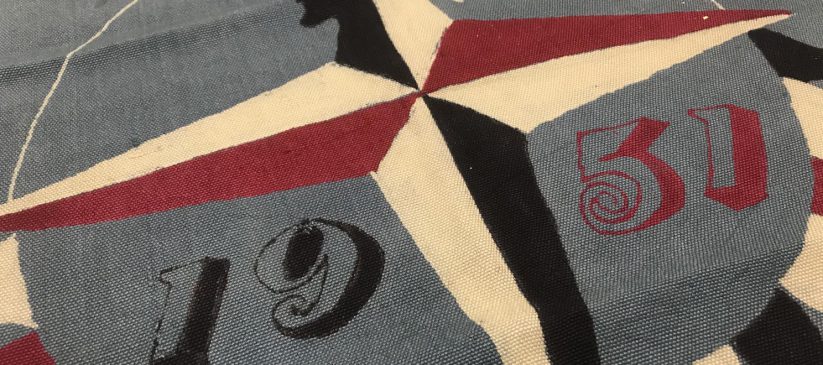
Michael O’Connell, Festival of Britain logo wall-hanging, circa 1951 In 1948, the graphic designer Abram Games won a competition to create a logo for the Festival of Britain. His successful design featured Britannia, bunting, union jack colours, and a compass shape. It combined national pride and the idea of a seafaring superpower with the homely […]
Sheep bell
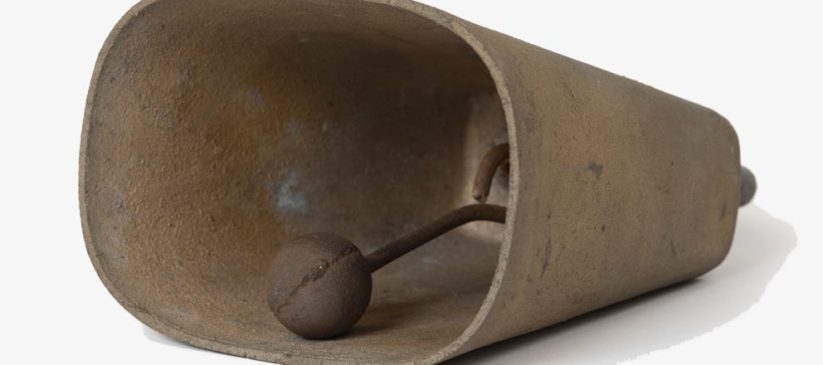
Whitechapel Bell Foundry, Sheep bell used as theatre prop, 1950s The Whitechapel Bell Foundry closed in 2017, after more than four centuries of continuous trade, and 250 at the same site. At around the same time they made this bell they also cast a special bell for the 1951 Festival of Britain. The closure of […]
Object-handling at home – the bee skep
In this post our curator, Ollie Douglas, introduces us to bee skeps and helps us to explore their history, construction, and design. He describes some simple, hands-on ways for us to think and learn about how bee-keepers used to house their bees (all without having to leave our own homes). A bee skep is a […]

